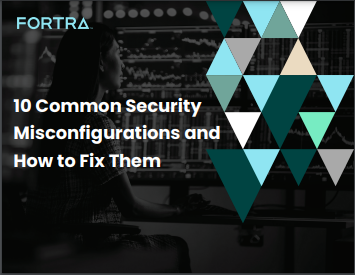10 Common Security Misconfigurations and How to Fix Them

Is your organization using default security settings, or do you have a security configuration management (SCM) program in place to ensure your configurations are as secure as possible?
Misconfigurations are a leading cause of unauthorized access and security breaches, creating entry points for hackers in servers, websites, software, and cloud infrastructure. The Open Worldwide Application Security Project includes security misconfigurations in their OWASP Top 10 list of web application security risks: “With more shifts into highly configurable software, it’s not surprising to see this category move up.” And the problem isn’t limited to the cybercriminals seizing the opportunity—it’s also an issue of human error, with misconfigurations being responsible for 21 percent of error-related breaches.
Luckily, security misconfigurations are easy to prevent and correct when you’re equipped with the right knowledge and tools. This guide highlights ten of the most common types of security misconfigurations and how to fix them using SCM.


